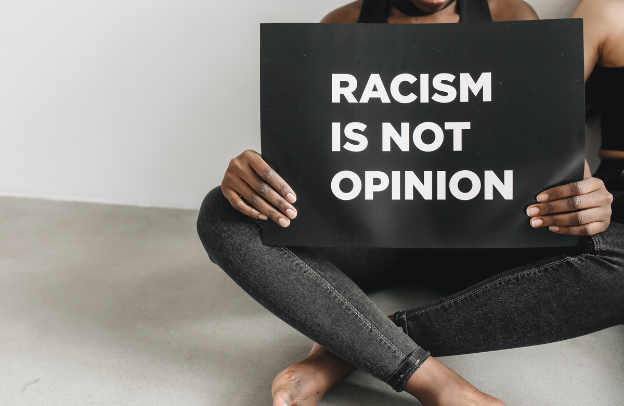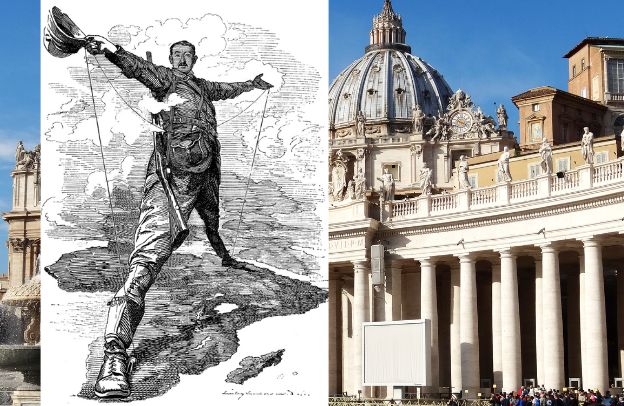Racism And Slavery: Reflection On Human Madness by Stefano Anselmo

Thank you for checking out this series of articles. Planning to host Stefano Anselmo on the Obehi Podcast to discuss the question of Racism and Slavery, I asked him to send me a description of what he wanted to talk about. Well, the writing which was presented in Italian language turned out to be quite long, so we decided to publish it in a series of seven articles after translating it from Italian to English. Enjoy the reading and leave your thoughts in the comment section.
Want to learn more about storytelling? Start by downloading the first chapter of The Storytelling Mastery.
Here is a list of all the articles in the series – Racism And Slavery: Reflection On Human Madness by Stefano Anselmo:
- Racism And Slavery: Reflection On Human Madness by Stefano Anselmo
- What Racism Requires: Religion And Science Were To Go Hand In Hand
- Racism And Slavery: How The Hamitic Theory Began To Crumble
- In America Before Columbus: Exploring European Racist Stereotypes
- Racism And Slavery: African Crisis Is An Invention Of The West
- Our House Slaves: European Centuries Of Heritage
- Religious Endorsement Of Slavery As A Legitimized Business Both In Islam And Christianity
See the full interview (In Italian language)
THE REFLECTION STARTS HERE
Preface Condemned in the Geneva Convention of 1926, slavery has existed in various forms since the prehistory of mankind and, in some countries, still exists today.
Among the causes of the “success” of this practice are unpaid debts, crimes committed, and obviously invasions and wars, often declared precisely for the purpose of obtaining slaves.
Slavery, although practiced in different ways and with different degrees of coercion and violence, has fueled the economy of every era, constituting a profitable trade of economic labor.
ON RACISM
The Intent As a European (white), I remain disturbed every time I witness attempts, more or less conscious, to mitigate the gravity of what was the slave trade by adducing reasons such as: “slaves have always existed,” or “even Africans sold their own kind”; misery loves company, after all!
Statements that are undeniable and widely documented in themselves, however, the Western narrative usually dwells on certain important aspects, perhaps to alleviate its sense of guilt.
This is what I will try to explain in the following lines. Before proceeding, however, I would like to highlight how the narrative of the African Slave Trade and the unimaginable cruelties associated with it, as well as the equally abhorrent consequences resulting from the era of colonialism, have been poured into a single pot of facts, transforming them into a jumble of news, hardly distinguishable.
See also The Trans-Atlantic Slave Trade and Its Impact on Africans with Christopher West
Now, for all of us, myself included, the idea of the “African Slave Trade” or “Slave Trade” immediately conjures up the image of the black slave in chains, vilified, violated, deprived of any rights, and destined forever to be the property of a white person, at best considered sub-human if not even close to being an animal species and, in any case, private property is devoid of any human rights and completely subject to the will and arbitrariness of the “legitimate” owner.
However, this figure of the slave does not find a uniform correspondence in historical reality because, in many societies preceding the trade, and especially in Africa, the slave as we imagine it, never existed except irregularly and sporadically in terms of epochs and cultures.
Although not always treated with kid gloves and deprived of some rights, slaves were still people; perhaps of a “B” series, but still people.
So much so that the possibility of emancipation and return to freedom was almost uniformly contemplated, opening up perspectives of considerable social roles. And, not surprisingly, in many African languages, there is no original term that designates the figure of the slave, as we understand it today.
Let’s start talking about racism Even today, racism survives concealed among the coils of the best intentions because as the geneticist Guido Barbujani wisely recalls: “The idea of human racial division has been with us since the beginning of science; it cannot disappear in five minutes.”
Luca Cavalli Sforza, the leading Italian geneticist and former director of the Department of Genetics at Stanford University, explains: “We lose genetic diversity when we marry within similar groups and increase the risk of genetic problems.
Hybridization, on the other hand, increases the richness of individuals’ genetic endowments, and hybridization is a real hope for improvement for humanity. The more diverse the genetic endowments of the father and mother are, the more advantageous combinations can arise. It’s the so-called vigor of hybrids.
And, we can also talk about the “vigor of hybrids” for humans, characterized, generally, by some behavioral characteristics, such as the ability to learn. In short, they have an extra edge.
THE ORIGIN OF RACISM
When in 1950 UNESCO wanted to close the official debate on the existence or non-existence of human categories (i.e., races), the reference was not only to Nazi politics but had a much broader scope, bringing back memories of the genetic determinism of the eighteenth century.
According to this theory, now discredited, the actions of human beings would be attributable and/or determined by their genetic makeup. In the rationalistic era between the eighteenth and nineteenth centuries, attempts were made to classify human beings scientifically.
Probably the first to do so was the Swede Linnaeus (1707-1778): in the essay of 1758 Systema Naturae, he distinguished men into Europeans (beautiful, muscular, and “governed by laws”), American redskins (fundamentally choleric), Asians (yellow-skinned and “melancholic”), and Africans (black, weak, and slow).
The American founding father Benjamin Rush (1745-1813) furthered the theory that all men were originally white, descending from Adam and Eve and that blacks suffered from a strange disease, “negroidism,” responsible for their skin color and a starting point for seeking similarities with monkeys, of equal African origin.
One of the proofs supporting these ideas was the Hottentot women (coming from a particular tribe in southwestern Africa) exhibited to the world in Freak Shows by curious as well as ignorant American businessmen.
Trying to legitimize the inferiority attributed to the “different,” bizarre theories were practiced, such as the measurement of the ratio between the lengths of the forearm and the arm, the distance between the penis and the navel, until arriving at the most interesting and mysterious part of the body: the head.
Not surprisingly, the result obtained after thousands of cranial measurements was that at the top of the ranking, the Anglo-Saxons and Teutons could boast of possessing the largest brain, while the black Africans were relegated, without too much explanation, to the last positions. Attempts to divide men based on morphological characteristics allowed for genetic studies to further strengthen extremist positions.
The anthropologist and climatologist Francis Galton (1822-1911), cousin of Charles Darwin, coined the term eugenics in 1883 for a methodology of studies and experiments aimed at the improvement of the human species by carrying out artificial selection of traits considered positive (i.e., eugenic). Thus, in 1910 in New York, the center for eugenics studies was founded, with the task of controlling the development of the “best citizen,” a pure American model.
Naturally, a similar principle was at the base of Hitler’s Aryan race theory. Mussolini was no exception: whatever one may say, Fascism was strongly racist: the anthropologist Guido Landra (1913-1980) became responsible for the “Demorazza” and, at Mussolini’s behest, disseminated (with wide consensus) the Manifesto of Racist Scientists, written and signed by often bribed prestigious personalities of Italian science of the time.
SUBDIVISION INTO HUMAN CATEGORIES
Racism is equivalent to discrimination applied in different ways and for different motivations, always with political and above all economic implications, even if not infrequently camouflaged by ethical, hypocritically philanthropic, scientific, or even eschatological motivations.
Since ancient times, racism has been used to limit access to power (economic and political) to as few people as possible, implementing divisions into castes, social classes, ethnicities, and races. The upper classes were ennobled through the deification of rulers and heroes, dividing the population into those with and without rights, based on gender, ethnic, religious, racial, geographical, or other affiliations.
This operation of ethnic planning was implemented by adducing “incontrovertible” motivations through myths and propaganda created ad hoc: divine will (from Napoleon to Bush), deification (pharaohs, Alexander the Great, etc.), mythological descent, birth marked by natural events indicating the favor of the gods; right of blood.
- In politics: we are the best; others, uncivilized, savage, scum.
- In religion: we hold the Truth; others: heretics, infidels, pagans, unbelievers, etc.
- In (fake) science: there are superior and inferior races; the superior ones have more rights (by divine decree) to dominate over the others.
- In elitist and class rights: obtainable through matrilineal or patrilineal descent.
The aim is to reduce as much as possible the number of potential power-holders to manipulate the economy, and to reduce the distribution of goods and benefits, various strategies were devised.
Thus, it gradually fossilized in the minds of Africans and Westerners alike, the idea that fair skin corresponded to a better and higher status. But other factors also favored the spread of the idea that being fair-skinned was more advantageous. Here are some examples.
Example 1
William Lynch applied the ancient strategy of divide and conquer to the letter, which made the Roman Empire great: if you want to dominate a people, create internal divisions and you will easily gain the upper hand. In a public speech (USA 1712), Lynch described his method for controlling slaves and preventing them from rebelling.
Based on skin color, he favored lighter-skinned slaves at the expense of darker ones. In the Southern United States, the darker ones were employed in the arduous work of plantations, and the lighter ones as domestics, enjoying better food, lodging, and clothing: Lynch knew that by doing so, divided and opposed, they would be busy quarreling among themselves and would not unite against their masters.
Example 2: the “One Drop Rule”
In the United States, the white and racist society had an interest in maintaining economic and political power within a rather small and, as much as possible, oligarchic group. For this reason, it was strategically advantageous to exclude as many people as possible from the privileged society.
See also French Lawmakers Advance Bill to Combat Hair Discrimination
Thus, in full discrimination, the famous “one drop rule” came to the rescue (a rule according to which a drop of African blood was enough to be considered Black), applied in the American states with different criteria, including in the classification of Black, people who had distant ancestors and who, visually, did not bear any African trace within themselves.
Since legalized social discrimination was in place, most Americans were deprived of social rights. The phenomenon was so widespread that it gave rise to the “pass as a white” phenomenon. In fact, despite the passage of a long time since then, Obama is still referred to as the first black president of the United States, although he is effectively of mixed race: 50% White and 50% Black.
Therefore, in the USA, to be considered “Black,” a minimal African ancestry (one drop) was enough, even if “diluted” to the point of being unrecognizable. This rule was adopted in the early twentieth century and generally accepted both by Blacks (who, however, would not have had another choice), and by Whites: judges, officials, and, of course, members of the Ku Klux Klan.
Example No. 3: “The Brown paper bag”
Between 1900 and 1950 in the black neighborhoods of major American cities, a method called the Brown Paper Bag test was applied. It involved excluding darker-skinned Black individuals by comparing their skin color to the color (hazelnut) of a brown paper bag: lighter-skinned individuals, mostly of Caribbean origin, had free access to public places, churches, and other gathering spaces; others did not.
On Ethnocentrism: Man is anthropocentric by DNA. The Egyptians called themselves “remetw” or “the Men” (meaning “the men par excellence, the true human beings”). And so did almost all other peoples in Africa, Asia, and the Americas. Alternatively, there were the Greeks who considered themselves the most evolved and civilized, viewing all others as barbarians.
However, ethnocentrism can also have a positive value: Positive value (balanced ethnocentrism) = being part of the group, recognizing and sharing its culture. Negative value (exaggerated ethnocentrism) = judging others by placing oneself as a point of comparison. Example No. 1: Anthropologist Manson is a bad teacher. Example No. 2: The anthropologist is a bad teacher.
Both statements are correct, but by removing the specificity of Example No. 2, the expressed thought is perceived in a dimension of professional/racial prejudice. Conversely, in statement 1, reference is made to a specific person and not to a professional, ethnic, racial, or other group.
About Stefano Anselmo
Stefano Anselmo, also known as Stefi Anselmo is a Milan based markup artist. He attended middle school at the Gaudenzio Ferrari Institute in Vercelli, Italy. He has been participating in updating seminars across Italy and abroad since 1994, including during events such as the Festival della Scienza and “L’Africa delle Meraviglie” in Genoa.
Stefano has lectured at various universities, including the University of Trieste and I.U.L.M. University in Milan, focusing on African costume and Egyptian civilization.
Throughout his career, Stefano has worked as an image consultant for various artists, collaborating on album covers, fashion photo shoots, advertising campaigns, and music videos.
He began his career in 1967 at the Geneviève Beauty Institute in Milan and later served as the educational director and teacher of makeup and special effects at the BCM School in Milan from 1976 to 1993.
In 2004, Stefano opened the Stefano Anselmo Academy in Milan and has since been involved in the organization and launch of various beauty academies. He has also collaborated with Discovery Channel on projects related to ancient Egypt, including the reconstruction of statues and digital facial reconstructions.
Stefano is a prolific writer, having authored numerous books on makeup, beauty, and African studies. He has also contributed articles to leading beauty and aesthetics magazines. Additionally, Stefano is skilled in Photoshop and other digital tools for image editing and reconstruction.
Stefano is fluent in Italian, French, English, Spanish, and Wolof. He has excellent communication and interpersonal skills, developed through his extensive experience as a teacher and lecturer. Stefano is proficient in Microsoft Word, PowerPoint, and internet research.
Outside of his professional endeavors, Stefano is involved in cultural associations focused on African studies and frequently collaborates with non-profit organizations operating in African territories. He holds a regular B type driving license.
His List Of Books
- 1970: Les secrets du maquillage correctif ‑ ZASMIN cosmetici – edizione italiana, inglese e francese.
- 1979: Il trucco nella vita nell’arte, nello spettacolo ‑ BCM – edizioni, Milano.
- 1982: Come, dove, quando truccare ‑ SEPEM – edizioni, Milano.
- 1984: Il trucco e le maschere‑ BCM – edizioni, Milano.
- 1985: Il trucco ‑ Volume 1 ‑ Trucco correttivo ‑ BCM – edizioni, Milano.
- 1987: Il trucco ‑ Volume 2 ‑ Trucco teatrale, cinetelevisivo, effetti
- speciali – BCM Milano.
- 1993: Tecnica ed arte del trucco ‑ TECNICHE NUOVE – edizioni, Milano.
- 1993: El maquillaje en el arte en el especataculo – PERVINKA Editrice, Lonigo.
- 1995: Impariamo il wolof – C.O.E. Milano.
- 1996: Africa in Lombardia – C.O.E. Milano.
- 1997: Diventare esperti di trucco ‑ ALA Edizioni, Milano.
- 1999: Devenez une pro du maquillage – L.N.E. Edition, Paris
- 2005: Faremaschere – M DD Edizioni CS
- 2005: Becoming an expert makeup artist ‑ ALA Edizioni, Milano.
- 2009: Italiano/Wolof Istruzioni per l’uso – Ediziono dell’Arco, Milano.
- 2010: Nuovo Ricettario di Cucina del Truccatore moderno (solo on line).
Want to learn more about storytelling? Start by downloading the first chapter of The Storytelling Mastery.






